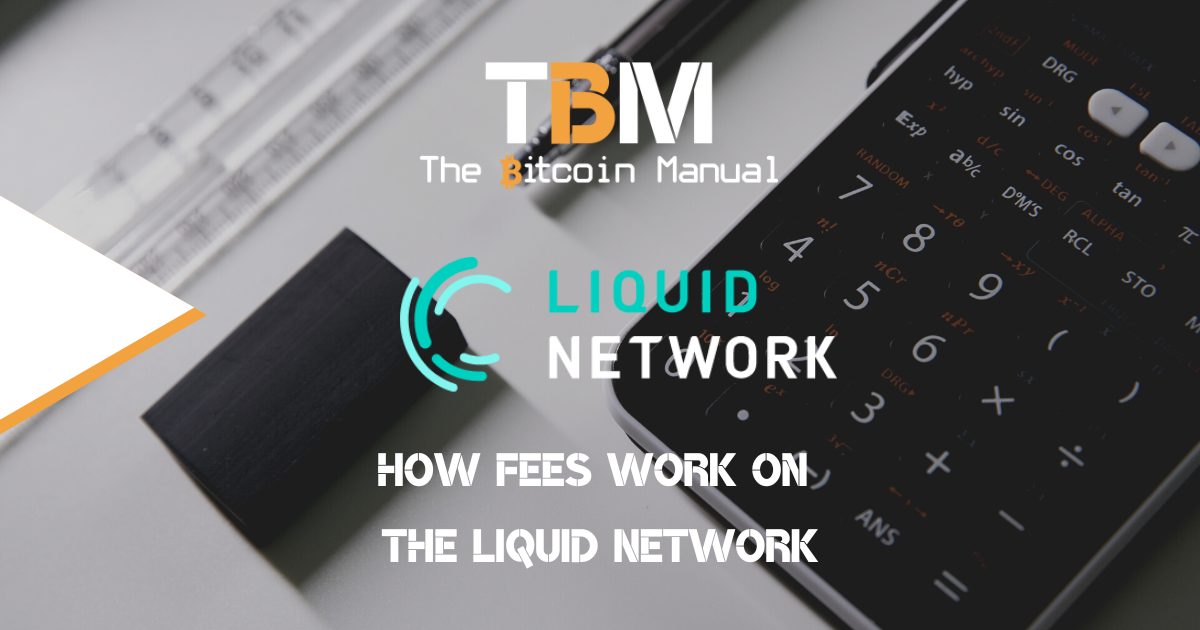The Liquid Network is a layer-2 solution for bitcoin, which allows users to move funds to a different blockchain with a different set of rules and consensus mechanisms. The Liquid network offers users fast, confidential settlement and issuance of digital assets, such as stablecoins, security tokens, and other financial instruments, on top of the bitcoin timechain.
How do transactions work on Liquid?
As is the case with the bitcoin base chain, every transaction on the Liquid Network includes a fee, paid in Liquid Bitcoin (L-BTC). Liquid transaction fees work in a similar way to transaction fees on Bitcoin, which are paid in bitcoin (BTC).
Transaction fees for all transfers on Liquid are always paid in L-BTC. That includes sending any Liquid asset (e.g. USDt or the BMN). To transfer funds on the Liquid network, the sender needs to hold a small amount of L-BTC to pay the transaction fee.
On Liquid, the sender is responsible for the payment of transaction fees; the recipient does not need to hold L-BTC in order to receive a transaction.
Why does liquid have transaction fees?
The reason liquid transactions include a fee is to mitigate the risk of Denial of Service (DoS) attacks, in which a malicious user would spam a large number of transactions at zero cost to either fill up block space or the mempool and prevent other transactions from being completed and compromise the use case for the network.
Fees also ensure that there is a market incentive to include transactions in the next block should you wish to prioritise a certain transaction.
Who receives liquid’s transaction fees?
Liquid transaction fees are sent to a wallet controlled by Blockstream. The fees are used in part to pay the Bitcoin mainchain fees required for L-BTC peg-outs from the Liquid sidechain to the Bitcoin mainchain and thereby indirectly facilitate free peg-outs for network users.
While fees are also utilised to manage the Liquid Federation’s mainchain BTC wallet.
How are fees on liquid determined?
Similarly to Bitcoin miners, Liquid functionaries prioritise transactions with higher fees when selecting transactions to include in a block. As a result, like Bitcoin, a fee market exists on Liquid:
When block space is in high demand, users may compete to have their transactions included in a block sooner by paying higher fees.
Currently, the lowest possible transaction fee on Liquid is 0.1 satoshi/vbyte (one-tenth of the minimum fee on Bitcoin), which at the time of writing, is typically sufficient to get a transaction into the next block. This may change as Liquid becomes more popular and traffic on the network increases.
Liquid’s total transaction capacity (transactions per second) is similar to that of Bitcoin.
Controlling your transaction fees
Liquid network wallets like the Green wallet have a fee control feature that allows you to select from three transaction speeds (slow, medium, fast), which estimates the fee value based on the required confirmation time.
Should you wish to have more granular control over the fees you pay, the wallet also has the option to enter a custom transaction fee manually.
Pay your chain fees with fiat
The Liquid network might use L-BTC as its native asset, but it’s not the only asset that can be moved on Liquid rails. As explained above, fees are charged in L-BTC for any asset that is transferred over the network, but it doesn’t mean that you’re limited to only using L-BTC to pay fees. If you feel your satoshis are far too precious to hand over to Liquid validators and don’t want to lose to opportunity cost, you can pre-fund your wallet to pay fees in L-USDt.
Using a service known as Liquid Taxi, users can pay per transaction with USDT or buy a prepaid package to get an API KEY, which they can then redeem when transaction fees need to be paid.
Give us your take on liquid
Are you a bitcoin purist that refuses to use anything but the base chain? Are you new to bitcoin and didn’t know that second layers and side chains exist?
Have you used the Liquid network before? What are you using it for? How do you find its usability compared to that of the base chain or the Lightning network? Let us know in the comments down below.




